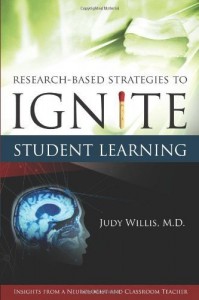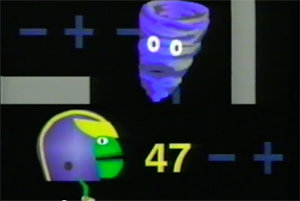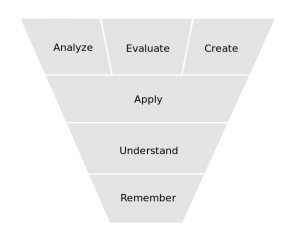How Far We’ve Come, How Far We’ve Yet to Go
For the majority of my life I’ve wanted to see the marriage of two of my greatest loves: Video Games and Knowledge. Within the last ten years we’ve had the benefit of watching the interactive medium mature into a widely recognized and respected mainstream art form, and even more recently, the acknowledgement of its value in places of learning. The latter mostly due to the gamers of yesteryear, themselves maturing into adult contributors to society, and beginning to implement what they have understood all along: that games are an extremely powerful, interactive tool for more than just entertainment.
Despite these leaps in understanding and adoption of the “game” as an educational aid, we still have yet to bring it to its true potential, and certain, lingering preconceptions about what video games are and can do continue to hold it back. Those of us who grew up with the entertainment software era know the stigma it has fought to shed for 30 years, namely its synonymy with “kid stuff”, being a “waste of time”, and containing “nothing of value”. Unfortunately those perceptions have yet to fade away entirely today, with most educational software companies doing away with as much of the “fun” and “childlike” aspects as possible, in order to make their product less “game-like”. This is something that, as developers and designers, we must change not just in our work, but about our fundamental cultural understanding of learning. Contrary to the typical belief that has dominated the formal educational field for centuries, not only are Play and Learning not mutually exclusive, they are intimately and inherently linked.
The Nature of Play
Play is the catalyst that encourages our learning process. When human beings have fun, it opens the mind to imagination and the realm of possibility. We come into the world with the urge to play being as second-nature to us as eating, sleeping and breathing, and that natural tendency is what prods us to reach out and experiment with ourselves, others and the environment. In the 2006 book “Research-Based Strategies to Ignite Student Learning: Insights from a Neurologist and Classroom Teacher”, the author Dr. Judy Willis writes:
“The highest-level executive thinking, making of connections, and “aha” moments are more likely to occur in an atmosphere of “exuberant discovery,” where students of all ages retain that kindergarten enthusiasm of embracing each day with the joy of learning.
…when spontaneity is replaced with conformity, students’ brains are distanced from effective information processing and long-term memory storage.”

Dr. Judy Willis. Whatchu talkin’ about?!
She goes on to state that “fun” results in a greater flow of oxygen to the brain, as well as released endorphins and dopamine, which in turns stimulates long-term memory and critical thinking. The combination of these lead to a sense of pleasure and joy, as well as the desire to engage further and pay closer attention to whatever the source of the stimulation might be.
In Dr. Stuart Brown’s 2009 TED talk “Play is More Than Fun”, he addresses how every species of animal on earth partakes in play for play’s sake, but this playful interaction facilitates cognitive function, problem solving and information retention. Focusing his career on the study of play, he cites many examples from his own research on the positive aspects of play at all stages of life, but also negative side effects resulting from not enough play. Ultimately his research shows that there is thorough, real-world evidence that play is not only positive for mind, body and spirit, but is a form of self-education and knowledge gathering.
The Obvious Question
I first became interested in the link between video games and education when I was too young to realize it. In the age predating the internet many games were too difficult to complete without outside help. As most of my leisure time as a child was spent immersed in computer and video games, my household found itself the frequent recipient of phone calls asking for hints and tips for various games I’d completed. After overhearing one such phonecall from a neighbor down the street, my Mother remarked “If you could remember the lessons you’re taught in school half as well as you remember every ridiculous detail of these games, you’d be a genius.”

Probably the crowning achievement of my life.
That one comment has stuck with me throughout my life. Why couldn’t I remember the lessons from school, but to this day I can still play through the entire first level of Actraiser (1991, Quintet, SNES) without looking at the television, solely using the audio cues as a guide? Almost every childhood gamer who is an adult today can tell you how to find the ‘warp zones’ in Super Mario Brothers (1985, Nintendo, NES), just as most who were children in the late 90’s can recite all 151 Pokemon (1996, Nintendo, Gameboy) from the original games.
So what’s the difference between the typical Game-as-Entertainment, and educational software? The answer should be “nothing”, but unfortunately it’s more complicated that this. The typical educational game has historically been thought of as “boring”, not engaging for the player, and often, not very educational at all, though the latter primarily because it fails to capture interest to begin with. As another author has covered previously on this site: All games are educational. So why do we end up learning more from entertainment-centric software than we do from the educationally focused ones?
Simpler Than You’d Expect

Blue Doors open with gunshots, Red Doors open with missiles? How about: Blue Doors accept 3-digit key-codes where the sum of each number must equal ‘X’, Red Doors accept prime numbers where two of 3 digits are even?
So when it comes to education, video games as they are, even the typical, entertainment-focused, bargain-bin ‘Call of Honor 4: Super Wars’, teach problem solving on a level superior to any other practice aside from real-world experience. Not only do Games-as-Entertainment present an experience almost solely comprised of compelling obstacles to overcome, they also have the added challenge of teaching the audience the fundamental tools to interact within their world, analyze problems, and apply what they’ve learned using a limited spectrum of available resources to overcome them. At their very core games have always focused on educating. Instructing the player how to interact with the world, gradually introducing them to increasingly difficult puzzles and challenges, and rewarding them through various stimuli when they succeed. The formula is the very definition of educational practice and positive reinforcement.
But our first instinct when it comes to educational gaming is to do away with these aspects, because we as a society have grown into a 20th-century industrialized mindset of assembly-line education. Today many games for education are placed under the label of “Serious Games”, where “whimsy” and “fantasy” are removed along with most things that make the game intrinsically fun to play. Granted this is justified in the context of training programs or high-level technical simulation, but when this practice is broadly applied to the entire medium in the educational realm, we immediately stagnate the experience in the same way educational software has been designed since the 1980s.
So if anything, we should be valuing the “fun” elements within these games even more than the educational aspects, as that is the feature that gets attention, holds focus, and as the evidence above suggests, facilitates the learning process directly. It should not matter that your Advanced Placement Science Game looks like Pikmin, and features a narrative typically found in a Japanese animation. If it is visually appealing, aesthetically pleasing, and draws more attention for it, you are not doing a disservice to the educational aspect, you are winning over an entire audience to volunteer their time to willingly learn.

Oh Mathman, how I recoiled at the thought of someone actually making me play you.
Educational games need to be games, first and foremost, to the point of tricking the audience into learning when all they thought they were doing was having fun. They don’t even have to be considered a different genre altogether. Role-playing games can teach chemical interactions in place of elemental weaknesses. Survival Horror can feature dramatic medical emergencies while instructing the player about antibiotics, medications, anesthetics and the failure of privatized health care. My personal dream is to develop an open-world, time-travelling Final-Fantasy-styled adventure epic that encompasses human history around the world, where the audience can relive historical moments, see key decisions that change the course of civilization, hear reenactments of famous speeches, and observe historical figures as accurately as what history has written about their lives and times.

Probably the only conceivable way to one-up this masterpiece.
So with hope and help, we can educate the entire world while bringing them laughter, drama and happiness at the same time.
Sources:
http://voices.washingtonpost.com/answer-sheet/learning/why-fun-matters-in-education.html
http://www.ted.com/talks/stuart_brown_says_play_is_more_than_fun_it_s_vital.html
http://www.ucdmc.ucdavis.edu/CANCER/pedresource/pedres_docs/ChildrenLearnThruPlay.pdf
About the Author:
Creath Carter is an independent video game developer who lives in the Boston Massachusetts area. With over a decade of professional development experience and formal education in both art and design, Creath is currently pursuing his dream of merging educational software and video games in unprecedented ways. He loves cats.

 “You wouldn’t have believed me. You had to learn it for yourself!” So says Glinda the Good Witch, at the end of the Wizard of Oz (belated spoiler alert for anyone who never had a childhood).
“You wouldn’t have believed me. You had to learn it for yourself!” So says Glinda the Good Witch, at the end of the Wizard of Oz (belated spoiler alert for anyone who never had a childhood). At the lowest level is Memorization, or the abiliy to merely parrot back a concept. If a student learns that the question “Which fraction represents 50%?” should be answered with “1/2,” then the student is unlikely to remember the information longterm, and even if the information stays, the student will be unlikely to be able to use the information well.
At the lowest level is Memorization, or the abiliy to merely parrot back a concept. If a student learns that the question “Which fraction represents 50%?” should be answered with “1/2,” then the student is unlikely to remember the information longterm, and even if the information stays, the student will be unlikely to be able to use the information well. Few classrooms have musical instruments, architectural firms, and baking supplies at the ready. But every classroom has a large number of students, and students can teach one another.
Few classrooms have musical instruments, architectural firms, and baking supplies at the ready. But every classroom has a large number of students, and students can teach one another.



